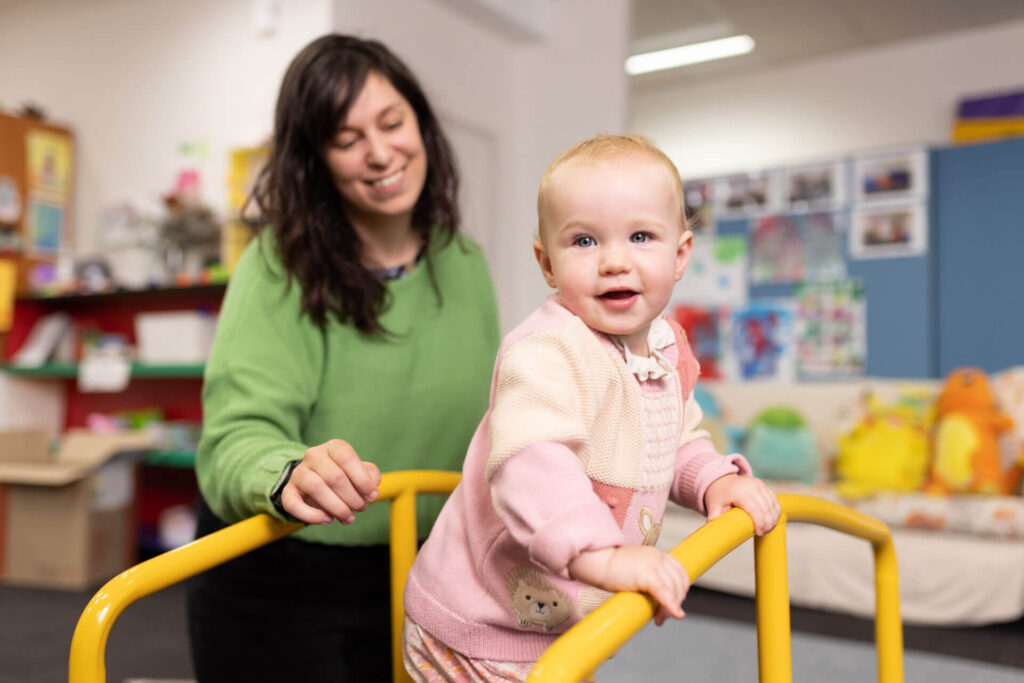The importance of secure attachment in toddlers: a perspective on ADHD
Understanding the behaviour of toddlers is complex, especially when considering developmental conditions like attention deficit hyperactivity disorder (ADHD).
At Early Start Australia, we emphasise the significance of championing secure attachment in mitigating the development of pronounced signs of ADHD in toddlers, especially considering the environmental, developmental, and temperamental factors crucial in a toddler’s life.
What is secure attachment?
Secure attachment in early childhood is foundational for healthy emotional and social development.
It involves a strong, enduring emotional bond between a child and their caregiver, providing the child with a sense of safety and confidence to explore their environment.
This bond is crucial in the formative years of a toddler and plays a significant role in their overall development.

The lifelong impact of secure attachment
Secure attachment in early childhood lays the foundation for various positive outcomes, including:
- Enhanced self-agency and emotional regulation
- Higher self-esteem and coping under stress
- Positive engagement with peers and development of closer friendships
- More trusting, non-hostile relationships in adulthood
- Greater social competence and leadership qualities
This attachment style not only influences childhood development but also extends into adult relationships.
Research indicates that adults who experienced secure attachments in childhood are more likely to maintain secure attachments in romantic relationships even into their 70s and 80s.
The dynamic nature of attachment
While early childhood attachment plays a pivotal role in shaping a child’s development, it’s important to understand that it is not an unchangeable fate.
The experiences and relationships a child has in their early years indeed lay a foundational framework for their emotional and social growth.
However, this doesn’t mean that their future is rigidly predetermined by these early experiences.
Repairing insecure attachments
Insecure attachment is not irreversible.
Quality childcare, healthy romantic relationships in later life, and effective therapy can help repair early attachment issues.
This adaptability aligns with Bowlby’s view of development as a series of pathways where change is always possible.
Breaking the cycle of attachment styles
Attachment styles often pass through generations, but conscious intervention can alter this pattern.
Understanding one’s childhood experiences and learning new ways of relating are crucial for parents who wish to change their attachment style.
Supportive environments also play a key role, as evidenced in studies where teenage mothers with good social support were able to form secure attachments with their babies.
Fostering secure attachment in toddlers
From birth to three years, various signs indicate the development of a secure attachment in toddlers.
Signs of secure attachment in toddlers:
- In the first three months, responding to the baby’s needs helps establish stability.
- Between four to eight months, effective soothing and positive interactions indicate a growing attachment.
- Around nine months, a clear preference for a primary caregiver and wariness towards strangers emerge.
- From nine months to three years, the child shows a clear emotional bond with a primary person and forms relationships with other familiar individuals.

The connection between secure attachment and ADHD
While ADHD is a neurodevelopmental disorder characterised by symptoms of inattention, hyperactivity, and impulsivity, it’s important to understand the broader context of a child’s development.
Secure attachment can play a mitigating role in the manifestation of signs of ADHD in toddlers, providing a stable environment for the child to develop coping mechanisms and emotional regulation skills.
Understanding toddler behaviour: beyond ADHD
It’s common for toddlers to exhibit behaviours that might be mistaken for signs of ADHD.
However, these behaviours are often part of normal development and can be influenced by factors like attachment style, environmental changes, and individual temperament.
Recognising the complexity of these factors is essential in understanding a toddler’s behaviour.
The role of Early Start Australia in supporting toddlers
At Early Start Australia, we focus on a holistic approach to child development.
Our team of professionals is dedicated to understanding each child’s unique needs, considering all aspects of their environment and development.
Why early diagnosis of ADHD in toddlers is challenging
Diagnosing ADHD in toddlers is complex and often deferred until the child is older, typically around 6 or 7 years.
This is due to the dynamic nature of toddler development, where environmental, developmental, and attachment factors play a significant role.
Early diagnosis can sometimes overlook these crucial elements, leading to a narrow view of the signs of ADHD in toddlers.
The importance of a holistic approach
At Early Start Australia, we advocate for a comprehensive understanding of each child’s behaviour, considering all contributing factors.
This approach ensures that any intervention or support provided is tailored to the child’s unique needs and circumstances.
How Early Start Australia Supports holistic development
Comprehensive assessments
Our team offers comprehensive assessments that consider all aspects of a child’s development.
These assessments are crucial in identifying areas for growth and informing intervention strategies.
Support for families
We provide resources and support for families, helping them understand their child’s development and the importance of secure attachment.
Our goal is to empower families with knowledge and strategies to support their child’s growth.

Reach out for support
If you’re concerned about your toddler’s development or want to learn more about the role of secure attachment in mitigating signs of ADHD in toddlers, Early Start Australia is here to help.
Contact us to discuss how we can support your child’s unique journey.









